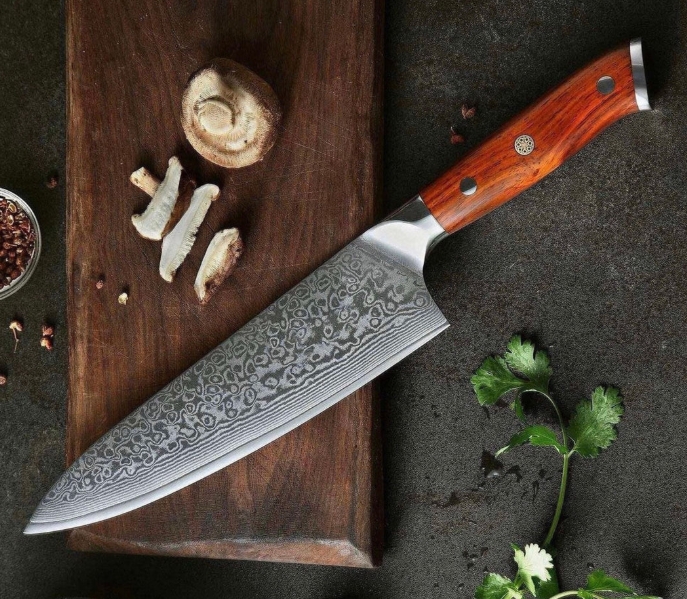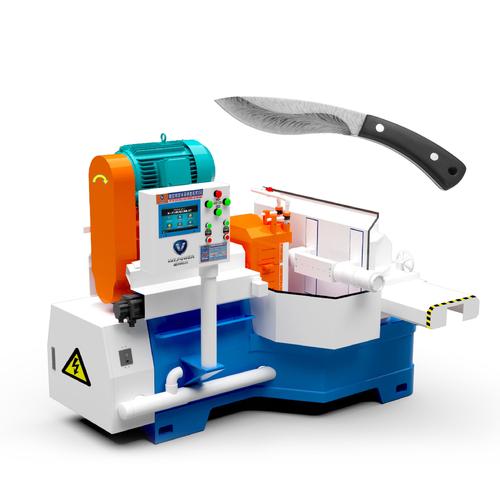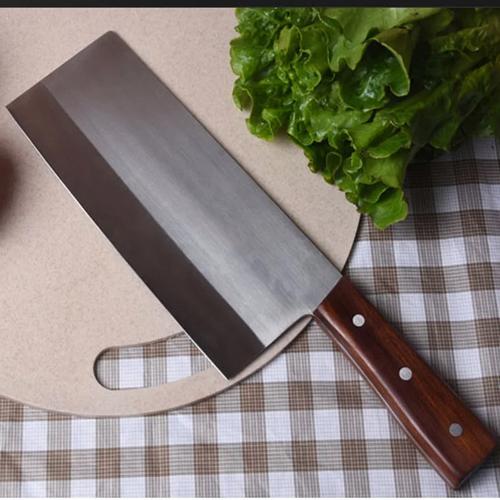

Views: 222 Author: Ella Publish Time: 2025-05-08 Origin: Site








Content Menu
● Why Proper Knife Care Matters
● Removing Stains and Preventing Rust
>> Honing
>> Sharpening
>> Knife Blocks
● Choosing the Right Cutting Board
● Special Care for Carbon Steel Knives
>> Avoiding Cross-Contamination
● Troubleshooting Common Knife Problems
>> Dull Blade
● Frequently Asked Questions (FAQ)
>> 1. How often should I sharpen my chef knife?
>> 2. Can I put my chef knife in the dishwasher?
>> 3. What's the best way to store my chef knife?
>> 4. How do I prevent rust on my carbon steel knife?
>> 5. What type of cutting board should I use with my chef knife?
A chef knife is the cornerstone of any kitchen, a tool that bridges the gap between amateur and professional cooking. Its versatility, precision, and durability make it indispensable, but only if it is properly cared for. Whether you're dicing vegetables, slicing meat, or mincing herbs, a well-maintained chef knife ensures safety, efficiency, and culinary excellence. This comprehensive guide will walk you through every aspect of chef knife care, complete with visual aids and step-by-step instructions, so your knife remains as sharp and reliable as the day you bought it.

A chef knife is more than just a cutting tool; it is an investment in your cooking journey. Proper care not only extends the life of your knife but also enhances your cooking experience. A sharp, clean knife makes food preparation quicker, more precise, and safer. Conversely, a neglected knife can become dull, rusted, and even dangerous, turning a joyful cooking session into a frustrating chore. By adopting a few simple habits, you can protect your investment and elevate your skills in the kitchen.
The first and most crucial step in knife care is cleaning. Immediately after each use, hand wash your chef knife with warm water and mild dish soap. Avoid abrasive sponges and never use steel wool, as these can scratch and dull the blade. Hold the knife by the handle, keeping your fingers away from the sharp edge, and gently clean both sides of the blade. For stubborn food particles, use a soft brush or a non-abrasive pad.
After washing, rinse the knife thoroughly to remove any soap residue. It is vital to dry the knife immediately with a clean, lint-free towel. Water left on the blade can lead to rust and water spots, especially on high-carbon steel knives. Never leave your knife to air dry, and avoid soaking it in water, as prolonged exposure can damage both the blade and the handle.
Even with prompt cleaning, knives can sometimes develop stains or minor rust spots, particularly if they are made from high-carbon steel. To remove these, create a gentle paste using baking soda and water. Apply the paste to the affected area and rub gently with a soft cloth or sponge. For more persistent stains, a mixture of vinegar and water can help dissolve discoloration without harming the blade.
To prevent rust, always store your knife in a dry environment. For carbon steel knives, consider applying a thin layer of food-safe oil, such as camellia or mineral oil, to the blade after cleaning and drying. This protective barrier helps repel moisture and discourages oxidation. Over time, a natural patina will develop on carbon steel, offering additional protection and character to your knife.
A sharp knife is a safe knife. Regular maintenance of your knife's edge ensures clean cuts and reduces the risk of accidents. There are two main processes to maintain sharpness: honing and sharpening.
Honing realigns the microscopic teeth along the edge of the blade, keeping it straight and sharp. Use a honing rod made of steel, ceramic, or diamond. Hold the rod vertically on a stable surface, and, at a 15-20 degree angle, swipe the blade from heel to tip along the rod, alternating sides. Honing should be done every few uses to maintain optimal performance.
Sharpening actually removes material from the blade to create a new edge. This can be done with a whetstone, manual sharpener, or electric sharpener. For most home cooks, sharpening two to four times a year is sufficient, but if you cook frequently, you may need to sharpen more often. Always follow the manufacturer's instructions for your chosen sharpening tool, and finish by wiping the blade clean to remove any metal filings.
If you are unsure about sharpening your knife, or if it has become severely dull or damaged, consider taking it to a professional. Many kitchen supply stores and cutlery shops offer sharpening services that can restore your knife to factory condition.
How you store your chef knife is just as important as how you use and clean it. Improper storage can dull the blade, damage the tip, and even cause accidents.
A wooden or bamboo knife block provides individual slots for each knife, protecting the blade and keeping it easily accessible. Ensure the slots are clean and dry to prevent moisture buildup.
Magnetic strips are a popular choice for both home cooks and professionals. They hold knives securely on the wall, preventing blades from knocking against each other. Always attach the knife spine-first to avoid chipping the edge.
If you prefer to store your knives in a drawer, use a dedicated knife organizer or tray. This keeps the blades separated and prevents them from sliding around, which can cause dullness and nicks.
For those who travel with their knives, a knife roll or individual blade sheath offers safe, portable storage. These are essential for culinary students, caterers, and chefs on the move.
The surface you cut on has a significant impact on your knife's longevity. Hard surfaces like glass, ceramic, or stone can quickly dull and damage the blade. Instead, opt for wooden or high-quality plastic cutting boards. Wood is gentle on the edge and has natural antimicrobial properties, while plastic boards are easy to clean and maintain.
When transferring chopped food, use the back of the knife (the spine) rather than the sharp edge to scoop ingredients. This simple habit helps preserve the blade's sharpness.

The handle of your chef knife deserves just as much attention as the blade. Handles can be made from wood, plastic, or composite materials, each with its own care requirements.
Wooden handles should never be soaked in water, as this can cause swelling, cracking, or separation from the blade. Instead, wipe them clean with a damp cloth and dry immediately. Periodically treat wooden handles with food-safe mineral oil or beeswax to maintain their luster and prevent drying.
Plastic, resin, or composite handles are more resistant to moisture but should still be kept clean and dry. Avoid exposing them to extreme heat or harsh chemicals, which can cause warping or discoloration.
Carbon steel knives are prized for their sharpness and ease of sharpening, but they require more maintenance than stainless steel. After each use, rinse and dry the blade immediately, especially after cutting acidic foods like tomatoes, citrus, or onions, which can accelerate corrosion. Applying a thin coat of oil after cleaning helps prevent rust and encourages the development of a protective patina.
Over time, your carbon steel knife will develop a unique patina-a bluish-grey layer that protects against further corrosion and adds character. This is a sign of a well-loved and properly cared-for knife.
Always clean your knife thoroughly after cutting raw meat, poultry, or fish to prevent cross-contamination. Use a separate cutting board for raw proteins and another for vegetables or cooked foods.
Practice safe knife handling at all times. Use a pinch grip for better control, keep your fingers curled under when chopping, and never leave knives unattended on the edge of a counter. Always pass a knife handle-first to another person.
Periodically inspect your knife for signs of damage, such as chips, cracks, or loose handles. Address any issues promptly to prevent accidents and maintain optimal performance.
If you notice rust spots or discoloration, act quickly. Gently rub the affected area with a baking soda paste or a specialized rust eraser. For stubborn rust, a mixture of vinegar and water can help dissolve the oxidation. Always dry and oil the blade after treatment.
If your knife no longer cuts cleanly after honing, it's time to sharpen. Use a whetstone or professional sharpening service to restore the edge. Regular maintenance prevents the need for aggressive sharpening, which can shorten the knife's lifespan.
A loose handle can be dangerous. For wooden handles, periodic oiling helps maintain a secure fit. If the handle becomes detached or cracked, consult a professional for repair or replacement.
Minor chips can sometimes be smoothed out with sharpening, but significant damage may require professional attention. Avoid using your chef knife to cut bones, frozen foods, or hard materials, as this can cause chips or bends.
Properly caring for your chef knife is an investment in your culinary future. By adopting consistent cleaning, drying, sharpening, and storage habits, you ensure that your knife remains sharp, safe, and reliable for years to come. A well-maintained chef knife not only makes cooking more enjoyable but also elevates your skills and confidence in the kitchen. Remember, every great meal starts with a sharp, clean blade-treat your chef knife with respect, and it will reward you with a lifetime of exceptional performance.

Sharpen your chef knife two to four times per year for typical home use, or whenever honing no longer restores its sharpness. If you use your knife daily or for demanding tasks, you may need to sharpen it more frequently.
No. Dishwashers can dull the blade, damage the handle, and cause corrosion. Always hand wash and dry your chef knife immediately after use.
Store your chef knife in a knife block, on a magnetic strip, or in a drawer insert to prevent blade damage and ensure safety. Avoid storing knives loosely in drawers.
Clean and dry the blade immediately after use, especially after cutting acidic foods. Apply a thin layer of neutral oil to the blade before storage to prevent rust.
Use wooden or plastic cutting boards. Avoid hard surfaces like glass, ceramic, or stone, which can dull your knife quickly.